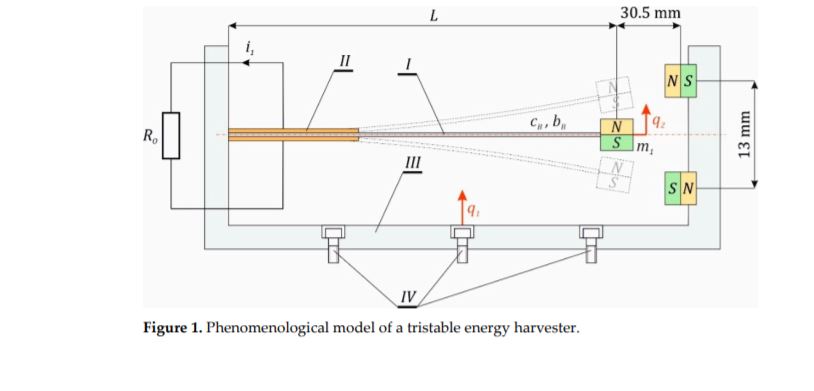Abstract:
This paper presents the results of numerical simulations of a non-linear, tristable system for harvesting energy from vibrating mechanical devices. Detailed model tests were carried out inrelation to the system consisting of a beam and three permanent magnets. Based on the derived mathematical model and assuming a range of control parameter variability, a three-dimensional image of the distribution of the largest Lyapunov exponent was plotted. On its basis, the regions of chaotic and predictable movement of the considered system exist have been established. With reference to selected plane of the largest Lyapunov exponent cross-sections, possible co-existing solutions were identified. To identify multiple solutions, a diagram of solutions (DS) diagram was used to illustrate the number of existing solutions and their periodicity. The proposed calculation tool is based on the so-called fixed points of Poincaré cross-section. In relation to selected values of the control parameter ω, coexisting periodic solutions were identified for which phase trajectories and basins of attraction were presented. Based on the model tests carried out, it was found that in order to efficiently harvest energy, appropriate transducer adjustment is required. Calibration of the transducer is necessary to obtain the greatest amplitude of vibration of the beam, which corresponds to the phase trajectory limited by external energy potential barriers. As expected, the average voltage induced on the electrodes of the piezoelectric transducer and the average electrical power recorded
on the resistive element are directly proportional to the amplitude and average kinetic energy of the beam.

Figure 1. Phenomenological model of a tristable energy harvester
.
Authors:
Grzegorz Litak , Jerzy Margielewicz , Damian Gąska , Piotr Wolszczak and Shengxi Zhou
This paper was published in: Energies 2021, 14, 1284. https://doi.org/10.3390/en14051284
To read full text, please visit publisher site or download pdf file.